The online environment has turned out to be a fruitful ground of advanced cyber-attacks. The current threat landscape of enterprises evolves constantly and comprises malware, phishing, advanced persistent threats (APTs) and ransomware attacks. These threats are increasingly becoming more complex and so the traditional technologies of detecting the threats usually do not yield the live-time information which is necessary to guard against the harm. This is where AI comes in the picture. Artificial Intelligence (AI) can help to revolutionize cybersecurity policy making so that enterprise can identify and take instant measures of malware infections and threats with unprecedented speed and precision.
The Importance of Real-Time Threat Detection in Cybersecurity
The Growing Cybersecurity Threat Landscape
Cyber threats are increasingly more advanced and difficult to identify as hackers continue using more elaborate procedures, tactics, and techniques (TTPs). Conventional digital protection systems like signature-based observance can no longer keep pace with these constantly changing threats. As a matter of fact, cyberattacks are getting more automated and even the cybercriminals are employing AI to evade the conventional security plans.
In the current cybersecurity environment, real-time threat detection is necessary. Organizations are able to avoid breaches, safeguard sensitive information and keep the confidence of customers by detecting and mitigating real-time threats. Real-time detection enables the business to react to an event at the right time and as quickly as possible before causing much harm and delaying their resolution time in the wake of a cyberattack.
Challenges of Traditional Threat Detection Methods
In the absence of AI, and prior to it, cybersecurity infrastructure based its protection on previously created rules and signatures to identify any threat. Though these approaches were effective when dealing with established threats, they failed to handle new threats or emerging threats. Consequently, organizations were usually unable to detect and neutralize sophisticated threats and particularly those that employed such methods as encryption, fileless malware, and polymorphic attacks timely.
In addition, legacy systems were not well able to cope with complexity and quantity of data that were being produced by contemporary enterprise networks. As the number of connected devices, data points and online transactions expounded exponentially, security teams could just not cope up with threat detection manually.
The use of AI can fill these gaps as it offers machine learning, real-time analytics, predictive models which can identify threats more accurately and in a shorter time. The AI-integrated ones have the ability to deal with vast amounts of data in real-time and constantly learn new information to instantly update their process of detection and automatically adapt it in order to detect new hostiles upon emergence.
How AI Enhances Real-Time Threat Detection
AI can be used to increase real-time threat detection by automating the process of potential threat identification, analyzing enormous volumes of data within a few seconds, and offering meaningful results to security teams. These are the main ways that AI is enhancing threat detection:
Machine Learning for Threat Detection
As a subfield of AI, ML is very important in threat detection. ML programs are motivated by historic information and will recognize trends and peculiarities in historic information. The more statistics the system gets to know the better the system will be in recognizing the possible threats.
Supervised Learning: During supervised learning, the training on the AI system is based on labeled data whose outcome is known. It enables the system to identify certain forms of attacks using previous trends.
Unsupervised Learning: During unsupervised learning, the data has no labels, and the system will form anomaly detection principles, without firm labels. The latter is especially helpful in identifying new threats and novel attack paths that are not encountered in the past.
It is possible to have an AI model that has been trained on past network traffic statistics, and detect anomalous spikes in traffic or unusual access patterns, reflecting a DDoS (Distributed Denial of Service) attack or an attempt to exfiltrate data.
Real-Time Anomaly Detection
The systems with the use of AI constantly keep an eye on the network traffic, activity of the users, and activity on the system and check they do not fall out of the usual patterns. In case of an anomaly, the system also flags the anomaly as suspicious which causes an alert to be sent off instantly.
Anomaly detection algorithms are based on the idea of actually studying the normal behavior and finding the anomalies to that normal behavior. Such anomalies might refer to possible security risks, i.e., an inappropriate access or suspicious activity of a user or a computer.
Example: large organization: AI systems will help watch the user activity and detect some abnormal logins with a different time or from an unknown place to raise the alarm about such a risk as insider threat or compromised credentials.
Predictive Analytics
The capabilities of AI in analyzing data of the past and finding tendencies apply to its predictive skills as well. Machine learning in predictive analytics starts with past information that is used to forecast possible occurrences of threats in the future. This preemptive strategy helps security teams to forestall threats even before they happen.
Combining AI and threat intelligence feeds together, companies are able to anticipate future threats and weaknesses. Predictive models can also give a trend in cybercrime so that a business can be ready to face a new kind of attack and rebalance their security position.
Example: Predictive analytics, based on AI, helps financial institutions to identify any possible fraud through an analysis of transactional occurrences and predict suspicious behavior in real time.
Natural Language Processing (NLP) for Threat Intelligence
Another important AI technology in detection of threats is natural language processing (NLP). With NLP algorithms, it is possible to process the huge quantities of unstructured data e.g., through emails, social media, blogs on security, and the dark web to create useful threat information.
AI based on NLP can scan forums, news outlets and cybersecurity alerts in real time to detect a developing threat or vulnerability. This assists security units to be informed about the current trend of attacks and to redress them.
Example: The threat intelligence systems powered by AI have the ability to automatically detect the references to the new strains of malware or phishing techniques, warning the security teams to make some actions.
Automated Incident Response
AI does not only assist with the detection of the threat but also can automate response to some types of attacks. In response to the presence of a threat, the AI systems may activate predetermined procedures to limit the threat, e.g. quarantining of affected systems, black-listing of malicious IP addresses or a network lock-down.
Automated incident response also decreases the amount of time in containing a threat so that the security team can work on the more complicated processes, having the AI do the menial work.
Example: In case a network is infected with ransomware, an AI model can automatically isolate an infected machine, disconnect it to the network and send an alert to the security team so they investigate further.
| AI Capability | How It Enhances Threat Detection | Business Benefit |
|---|---|---|
| Machine Learning | Learns from data patterns to detect known and unknown threats | Improves threat detection accuracy and adaptability |
| Anomaly Detection | Continuously monitors for abnormal patterns in real-time | Enables quick detection of novel or subtle threats |
| Predictive Analytics | Anticipates future threats based on historical data | Provides proactive threat mitigation and preparedness |
| Natural Language Processing (NLP) | Analyzes unstructured data to extract valuable threat intelligence | Identifies emerging threats and provides timely alerts |
| Automated Incident Response | Responds to threats immediately based on predefined rules | Minimizes response time and prevents further damage |
Challenges in Implementing AI in Real-Time Threat Detection
Even though there are enormous benefits of AI regarding real-time threat discovery, the deployment of the technology has its setbacks. The typical challenges of enterprises in implementing AI-based cybersecurity are discussed below:
Data Privacy and Security Concerns
Training and running AI systems needs an immense measure of information. This may arouse doubt over data privacy especially when sensitive customer or company information is involved. Organizations also need to make sure that they use AI models that fulfill high standards of data privacy (like GDPR or CCPA) and the models should not be susceptible to exploit during compilation or data scanning.
Solution: Companies need to introduce safe data handling procedures and anonymize any vagrant data to be on an appropriate side of the privacy regulations. An audit and encryption of data is important to its security in regular intervals during the data processing.
High Initial Costs
The deployment of AI-based threat detection measures is quite expensive particularly to smaller businesses with tight cybersecurity funds. The prices are not the only costs, as one should also consider the infrastructure, the training of the personnel, and the constant support needed to maintain the AI models effective.
Solution: Small and medium size organizations can begin with cloud AI solutions and they offer flexible pricing structures and a company can only use what they require. Moreover, there is the opportunity to find open-source AI tools in the search, cost-saving for the organization in advance.
Complexity of AI Integration with Existing Systems
Security systems based on AI might not be built to work on the same platform as legacy systems and thus might incur compatibility problems that would take some extra time and resources to be accomplished. Companies tend to have a problem with integrating AI-based threat hunting with their current security activities, including firewalls, SIEM (Security Information and Event Management) systems, and vulnerability scanners.
Solution: Continue reading Businesses can collaborate with the vendors that offer AI-based cybersecurity services, which can be easily interconnected with the current system. Also, cloud-based AI platforms will be easier to integrate since they provide compatibility with new security tools by design. .
Lack of Skilled Workforce
To maintain and manage AI-powered cybersecurity solutions, it is necessary to get competent specialists. The number of cybersecurity professionals available today is inadequate and has the expertise to implement and deploy AI systems efficiently. Such skills shortage may cause problems in leveraging AI of organizations to detect threats to optimal levels.
Solution: The businesses ought to, on an investment basis, invest in training and up-skilling their cybersecurity workforce to manage the AI tool-assisted tools. This challenge can be overcome through hiring skilled data scientists or working with AI consultants as well.
Trust and Transparency in AI Decisions
Although an AI can compute and make a decision more promptly than people, some types of AI models may have the black-box problem where security teams cannot comprehend how their AI models reach their decisions. Such a secrecy may cause fears about the validity of decisions made with the use of AI and decrease the confidence in the system.
Solution: One option is to apply explainable AI (XAI) to get information in terms of how AI models arrive at their decisions. By increasing the transparency of AI decisions, the organizations will encourage confidence and trust in the results of the system.
| Challenge | How to Overcome It | Business Benefit |
|---|---|---|
| Data Privacy & Security | Secure data management, anonymization, and encryption | Ensures compliance with data protection regulations |
| High Initial Costs | Start with cloud-based solutions or open-source AI tools | Reduces upfront investment and makes AI more accessible |
| AI Integration Issues | Use AI platforms that integrate easily with existing systems | Simplifies implementation and ensures smooth adoption |
| Lack of Skilled Workforce | Train in-house staff or hire external experts | Improves the effectiveness of AI tools and reduces reliance on external consultants |
| Trust & Transparency | Implement explainable AI (XAI) systems | Enhances trust and improves decision-making transparency |
Best Practices for Implementing AI in Real-Time Threat Detection
In order to maximize the benefits of AI-powered real-time threat detection, the enterprise ought to adhere to the best implementation practice, integration practice, and continuous optimization. These practices are capable of assisting business to utilize the maximum opportunities of AI and cope with its possible setbacks.
Continuous Monitoring and Tuning of AI Models
To keep up with emerging threats and attacks strategies, AI models should always be checked and adjusted accordingly. To be relevant and accurate, businesses are expected to constantly update their AI models using new data and threat-intelligence.
Integrate AI with Existing Security Tools
AI must work alongside the current security infrastructure but should supplement it instead of substituting it. Advanced Artificial intelligence-based threat detection programs ought to combine with old-fashioned systems such as firewalls, intrusion detection systems (IDS) and Security Information and Event Management (SIEM) system to come up with a stronger defense mechanism against cyber-attacks.
Maintain Human Oversight
Even though AI can detect the threats and perform its responses, human supervision is also essential. There should be security teams that observe AI-provided warnings and should interfere when the need arises, particularly when it comes to high-stakes emergency situations that require human guidance.
Focus on Data Quality
| Best Practice | How to Implement | Business Benefit |
|---|---|---|
| Continuous Monitoring & Tuning | Regularly update AI models with new data and threat intelligence | Ensures models remain effective and adaptable to new threats |
| Integration with Existing Tools | Ensure AI integrates with firewalls, IDS, and SIEM systems | Enhances overall cybersecurity posture and reduces silos |
| Human Oversight | Involve security teams in the monitoring and decision-making process | Maintains control and ensures AI outputs are accurate |
| Data Quality Focus | Implement data cleaning and validation processes | Improves the accuracy and effectiveness of AI models |
Summary
Many enterprises are revolutionizing the response of their ability to detect and respond to cyber threats in real time through AI. AI-driven systems are now key elements in recent cybersecurity strategies due to their ability to automate threat detection and improve its accuracy, or even actively protect an enterprise by calculating possible breaches in advance. Although data privacy, integration, and skills gaps are the challenges that threaten the successful AI implementation in threat detection, companies investing in AI to detect threats can benefit considerably by enhancing their cyber threat defenses.


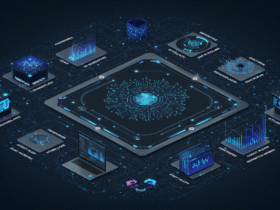
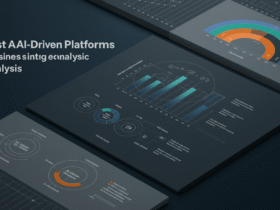















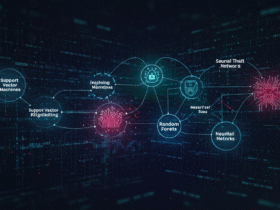


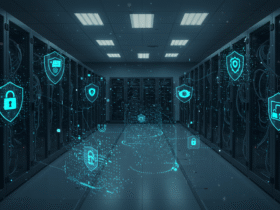



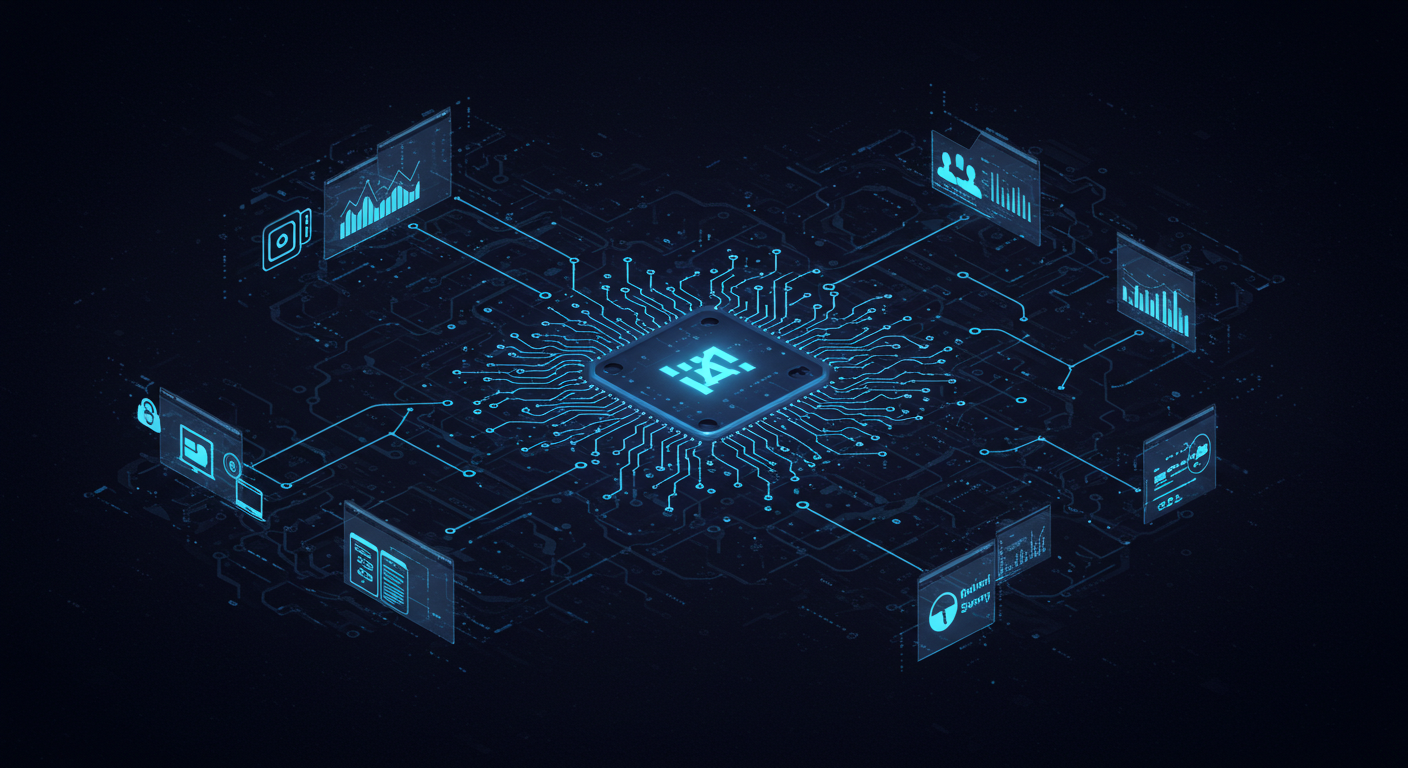


Leave a Reply